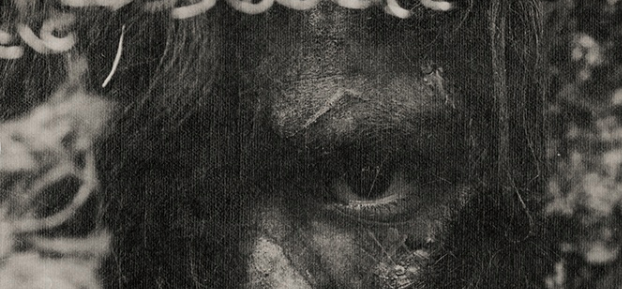
Donnie Lopez is a gay Latino/Hispanic social and political commentator,…
Fantastic Fest is home to some of the most incredible and well thought out movie narratives ever to hit the theaters. It should come as no surprise that FERAL has found a home here. From the devastatingly brilliant and complex mind of director Andrés Kaiser, comes a documentary-style film that presents the lost concept of feral children to the present 21st-century audience. FERAL is a worthy, unique, and terribly horrifying film that sheds new light on the neglected — or if hardly ever acknowledged issue — of children who are born and raised in the wild. Rare footage was found in Mexico documenting the findings of three children who lived in the wild for years. The film invites and encourages an investigation of how individuals treat the ‘others’ in society and reveal a nightmare of disturbing Freudian inventions that terrifies one to the core.
Mexican writer, director, and editor Andrés Kaiser prove in his first creative full-length feature film that he is no slouch. He tackles the heart wrenching, grotesque, and intricate aspects of humans in his worldwide release documentary. This remarkable writer is a master storyteller. His book “La Zarza Ardiente” was awarded the Manuel José Othón Prize for Literature. It is not surprising that he would transfer his skills for composing narratives to a different medium — filmmaking. Kaiser manages to combine and piecemeal together sophisticated styles of writing, mesmerizing imaginative passages, and fascinating audio and video recordings to show a very convincing darker side of humanity.
The Spanish documentary style film explores the mountains of Oaxaca that once belonged to a psychoanalyst priest who took it upon himself to incorporate feral children into modern society. The salvaged recordings are skillfully pieced together to tell a narrative of what could have occurred in Mexico long ago. The recordings are composed of interviews with the native villagers, personal video journal entries, and family members. These records all reveal a shocking truth about the events in those mountains. The results uncover a secluded and isolated ex-monk who struggles with his own humanity as he becomes unraveled. He is forced to re-evaluate his understandings of faith, trust, and compassion when the children prove to be incompatible with his teachings.
The film takes painstaking attention to detail when it introduces an ex-monk named Juan Felipe. He is a gifted man with a troubled past who combines psychoanalysis with religious studies to understand the cross-section of the human condition. He finds and attempts to rehabilitate a savage child into modern society. His first attempts prove to have merit and progress is established. These great strides ultimately lead to his downfall when he attempts to replicate his experiment with two other children that were found chained to the wall of a cave. He slowly discovers his scientific method was flawed, and in turn, reverts to his original calling of religious methods to help re-educate the children.
The unsettling manufactured truth of the feral children that were found in Mexico reveals more about humanity than one could have ever imagined. An exploration of scholarship in the field of psychology, linguistics, and religious studies all merge to illustrate the intersectionality of the kids. The movie insists on bringing to the foreground the duplicities that are pervasive within religion, personal ethics, and even in scholarly fields like psychology. Forcing the question, how do we successfully reconcile the ideas of the “other” with our own communities?
Crafted films that scrutinize the monstrous hypocrisies that ensconce the audience are often left out of mainstream media. This particular work does not shy away from the uncomfortable topics of human sexuality, established socially acceptable modes of communication, and ideas of civilization and its discontent. The general audiences will be horrified at seeing humanity at its best and what occurs when humans are unable to communicate effectively with one another. How individuals perceive sexuality, and its perversion when it is applied to those that should not have it. How societies crave civilizations — but are terrified of their own savage nature. The carefully fashioned film dives and looks at all these aspects in one perfectly produced picture.
A proclivity for writing stories that illuminate the imagination and snare the senses can only be devised by a mind so multifaceted and so unadulterated that it can only come from one man, Andrés Kaiser. Kaiser presents a palpable non-linear narrative. This method of storytelling presents it shares of drawbacks, but for this writer, it only helps to propel the storyline further. In the audiences’ views, they see only the seamless mode in which he is able to amalgamate disjointed accounts in a spellbinding manner.
The cinematography is exquisitely executed in combination with complex film techniques and outstanding character development, in order to divulge a narrative that both dismays and excites the audiences. This method reaches a wide range of audiences across cultural, racial, ethnic, class and nationalities. Kaiser’s powerful talents for developing thought-provoking tales is only enhanced by his adept knowledge of constructing film and unifying genres. All these capabilities in one single film — galvanizes the audience to want more from this artisan. If you have not already, this film is a must watch and should be on your playlist.
Donnie Lopez is a gay Latino/Hispanic social and political commentator, writer, entertainment journalist, and professor. He writes on topics that affect Hispanic/Latino culture. With his novel insight, veracity, and sense of humor, he entertains as well as educates the world.












